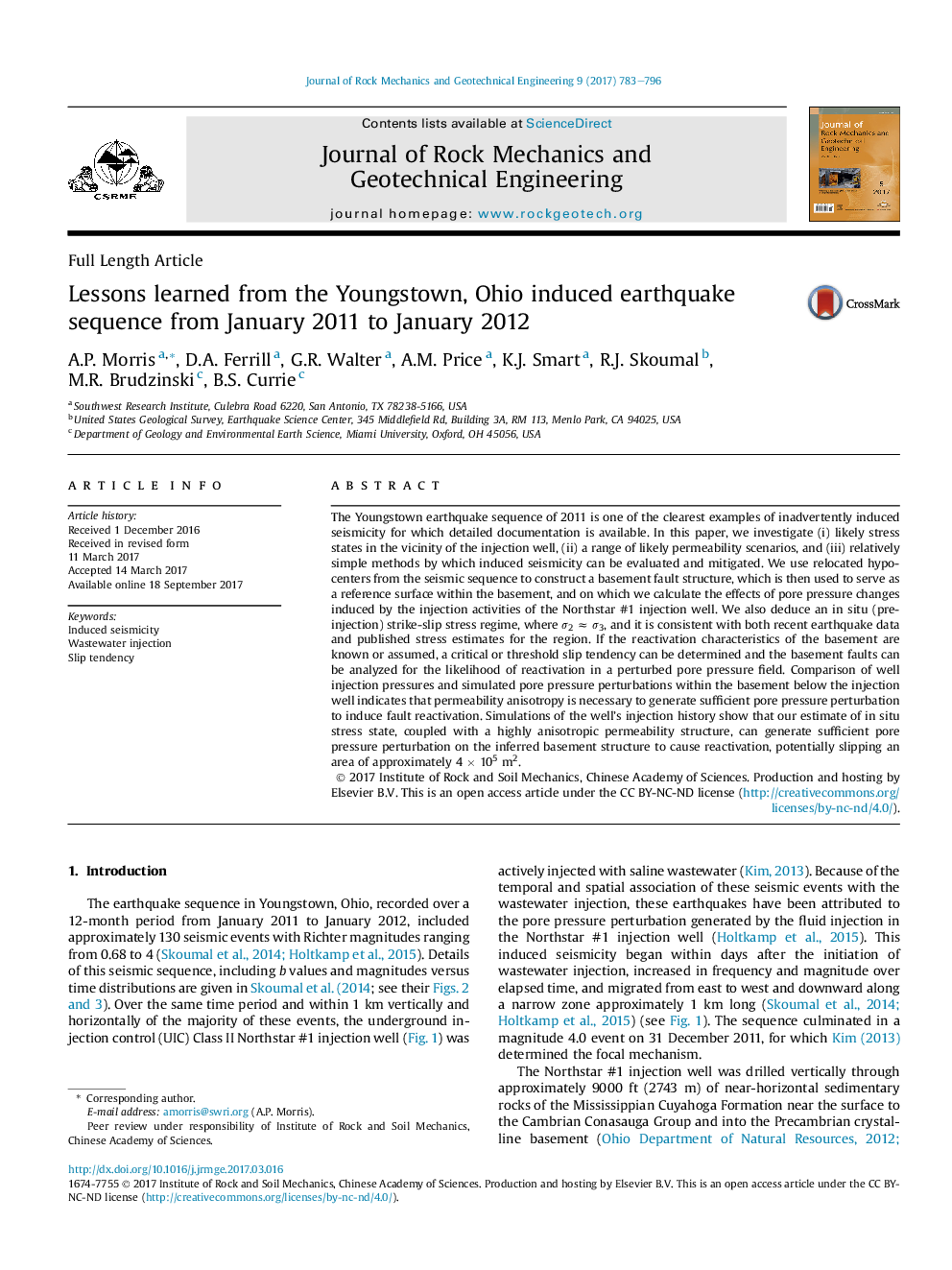| کد مقاله | کد نشریه | سال انتشار | مقاله انگلیسی | نسخه تمام متن |
|---|---|---|---|---|
| 4923681 | 1430783 | 2017 | 14 صفحه PDF | دانلود رایگان |
The Youngstown earthquake sequence of 2011 is one of the clearest examples of inadvertently induced seismicity for which detailed documentation is available. In this paper, we investigate (i) likely stress states in the vicinity of the injection well, (ii) a range of likely permeability scenarios, and (iii) relatively simple methods by which induced seismicity can be evaluated and mitigated. We use relocated hypocenters from the seismic sequence to construct a basement fault structure, which is then used to serve as a reference surface within the basement, and on which we calculate the effects of pore pressure changes induced by the injection activities of the Northstar #1 injection well. We also deduce an in situ (pre-injection) strike-slip stress regime, where Ï2 â Ï3, and it is consistent with both recent earthquake data and published stress estimates for the region. If the reactivation characteristics of the basement are known or assumed, a critical or threshold slip tendency can be determined and the basement faults can be analyzed for the likelihood of reactivation in a perturbed pore pressure field. Comparison of well injection pressures and simulated pore pressure perturbations within the basement below the injection well indicates that permeability anisotropy is necessary to generate sufficient pore pressure perturbation to induce fault reactivation. Simulations of the well's injection history show that our estimate of in situ stress state, coupled with a highly anisotropic permeability structure, can generate sufficient pore pressure perturbation on the inferred basement structure to cause reactivation, potentially slipping an area of approximately 4 Ã 105 m2.
Journal: Journal of Rock Mechanics and Geotechnical Engineering - Volume 9, Issue 5, October 2017, Pages 783-796
